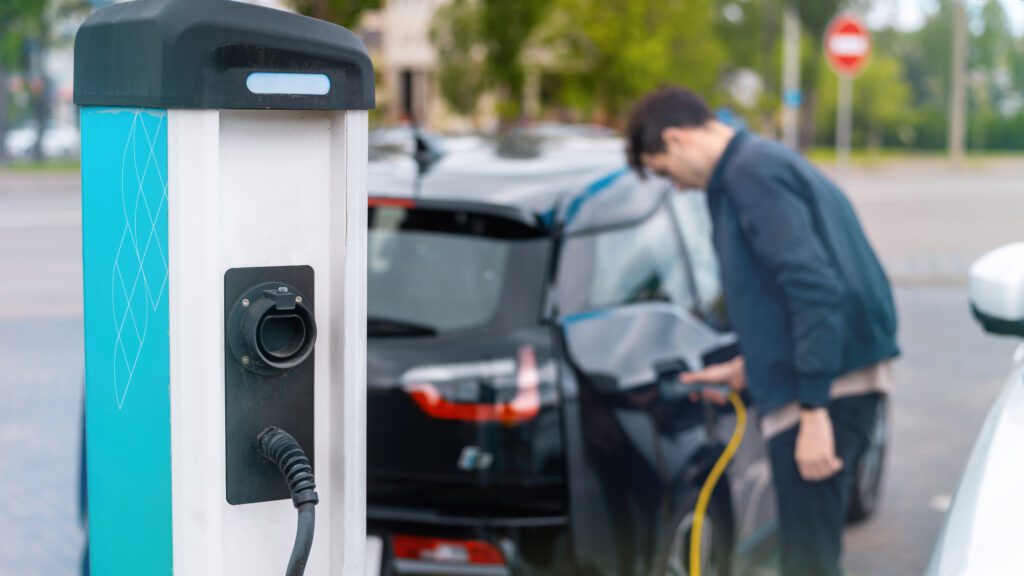Sustainability is no longer a “trend”; it has become a necessity if we want to preserve the planet and its resources for the future. Within the realm of sustainability, global mobility is one of the key areas being addressed to reduce its impact on the environment.
In this era of sustainable mobility, electric vehicles are gaining ground on our roads as an alternative to internal combustion engine vehicles, which rely on fossil fuels such as diesel or gasoline. As the adoption of this environmentally friendly technology increases, a fundamental question arises, especially at the end-user level:
Where and how can electric cars be conveniently and efficiently charged?
In the following lines, we will explore the advantages of charging stations for electric cars and the multiple options available to us as users and owners of electric vehicles to charge them. From the convenience of our homes to charging stations in communities and gas stations, the electric vehicle charging station has become a crucial element in facilitating the use and expansion of electric mobility, providing accessibility and convenience to keep our vehicles operational and efficient.
Where can electric vehicles be charged?
Accessibility to charging stations is essential to drive the adoption of electric vehicles. Fortunately, the electric charging infrastructure, also known as electric car charging points, is constantly expanding and offers various options for charging electric cars. However, this point is still a source of high contention between governments and users. The latter argue that the implementation and expansion of charging points are still slow and not keeping pace with the volume of sales of these types of vehicles, sometimes unable to meet an increasingly growing demand.
Currently, a user with an electric vehicle has several alternatives to charge their electric car or van.
Charging Electric Cars in Communities:
In many cases, residential communities are responding to the growing demand for electric vehicles by installing charging stations in their communal spaces and communal garages. This option is especially convenient for those who live in areas where they do not have access to a nearby public charging station or do not have a suitable personal garage due to the vehicle’s length. Additionally, this can meet the needs of multiple users. By charging the electric vehicle in the community garage, the need for travel is eliminated, making charging an integral part of the electric car owner’s daily life.
Advantages:
Convenience: Charging in your community is comfortable and accessible, as it is usually just a few steps away.
Potentially lower costs: Some communities offer free or reduced-rate charging for their residents.
Less congestion at public stations: By charging in the community, the user helps reduce congestion at public charging stations.
Charging Electric Cars at Gas Stations:
Traditional gas stations are also adapting to the electric vehicle revolution by installing electric chargers in designated spaces. We can also find so-called “electroliners,” exclusive service stations for electric vehicles. This gives electric vehicle drivers the opportunity to charge their cars during routine stops, similar to filling the fuel tank of an internal combustion engine vehicle.
Advantages:
Accessibility: Gas stations are strategically located.
Charging speed: Some gas stations offer high-speed chargers for quick charging.
Convenience: Chargers at gas stations are essential for non-urban trips and planned stops.
Charging Electric Cars at Home:
Charging at home is one of the most popular options for electric vehicle owners. You only need to install an electric charger on a property, such as in the garage, and connect the car overnight or when not in use.
Advantages:
Ultimate convenience: Charging at home is the most convenient way to ensure that the vehicle is always ready to use.
Predictable electricity costs: Lower nighttime electricity rates can be leveraged to charge the vehicle, which is always more economical than filling the tank of an internal combustion engine car with fossil fuel.
Flexibility: Not depending on the availability of public or community chargers provides the user with greater flexibility, especially for short-distance, urban, or similar vehicle usage.
Charging Electric Cars at the Workplace:
Many companies are adopting electric vehicle charging as part of their sustainability initiatives. They offer charging stations at their facilities for employees and visitors, facilitating the transition to electric mobility and demonstrating their commitment to environmental responsibility.
Advantages:
Encouragement of electric vehicle adoption among employees, customers, and suppliers.
Contribution to corporate sustainability as a distinguishing element for the company.
Reinforcement of the company’s image as a leader in environmental responsibility.
How many ways are there to charge an electric car?
Charging an electric car can be done in various ways depending on its connector type, each with its own advantages and disadvantages. The choice of installation should align with the vehicle’s typology to robustly leverage the capabilities offered by the electric vehicle. These are the main charging modalities for an electric car:
Alternating Current (AC) Charging:
AC charging is typically done at homes and Level 2 public charging stations. These chargers supply alternating current to the electric vehicle and are ideal for overnight charging at home or faster charging at public charging stations.
Advantages:
Charging the vehicle overnight at home.
Faster charging than Level 1 continuous current charging.
Level 1 Continuous Current (CC1) Charging:
Level 1 continuous current charging is commonly found in homes and is the most basic form of charging. It uses a standard charging cable and is the slowest option.
Advantages:
Charging at any standard power outlet.
Ideal for emergencies or occasional charging.
Level 2 Continuous Current (CC2) Charging:
Level 2 continuous current charging is faster than CC1 and is found in high-power public charging stations. These chargers require more specialized installation and are ideal for quickly recharging during a journey.
Advantages:
Faster charging at public charging stations.
Suitable for long (non-urban) trips and quick refueling.
Cost of Charging an Electric Car
One key consideration for drivers transitioning to an electric vehicle is the cost associated with charging. Fortunately, charging an electric car is generally more economical compared to filling the tank of a gasoline or diesel vehicle. The exact cost of charging an electric car varies based on several factors that must be carefully considered:
Electricity Rates: The cost of electricity varies by location and local rates. Generally, charging an electric vehicle is more cost-effective than purchasing gasoline, and many electric companies offer special rates for charging during off-peak hours, further reducing costs. Various studies indicate a 70% lower cost for electric vehicles compared to diesel vehicles, for example.
Type of Electric Vehicle Charger: The cost of recharging electric vehicles can also depend on the type of charger used. Some high-speed chargers at public charging stations may have higher rates but provide faster charging for these vehicles.
Battery Capacity: The electric vehicle’s battery capacity influences the charging cost. The larger the battery capacity, the more electricity it requires to fully charge the car.
Battery Health: Consider the health of the battery and its charging range. Batteries in poorer health have a shorter charging range, resulting in lower charging capacity and reduced overall range. Monitoring battery health is crucial.
Vehicle Efficiency: The efficiency of your electric vehicle also plays a role in charging costs. More efficient electric vehicles require less electricity to cover the same distance, reducing charging costs as they need less energy for longer distances.
Charging Schedule: Some electric vehicles allow scheduling charging to take advantage of lower electricity rates during off-peak hours. This can be an effective strategy to reduce charging costs.
It’s important to note that currently, charging an electric vehicle remains significantly cheaper than fueling a gasoline or diesel vehicle. Additionally, electric vehicle owners can benefit from periodic government incentives, further reducing the total cost of ownership.
Conclusion:
The commitment to electric vehicles is a key step towards greater environmental sustainability, with charging stations playing a pivotal role. With a growing charging infrastructure spanning residential communities to gas stations and public charging stations, electric vehicle drivers have increasingly convenient options for charging.
Whether charging at home, in our communities, at work, in shopping centers, or at a service station, electric charging stations and different types of points provide the convenience of charging your electric car whenever and wherever you desire. Choosing the right type of charging point is crucial to not compromise the stability of the vehicle.
As electric vehicle technology advances and charging infrastructure expands further, electric mobility is becoming an increasingly attractive and sustainable alternative, while also being less costly for users.
The arrival of more electric cars and the expansion of charging infrastructure are essential steps towards a cleaner and more sustainable world, where personal mobility and environmental care go hand in hand inevitably.



